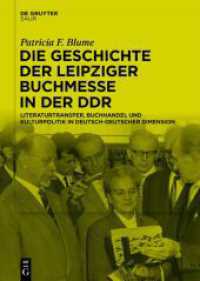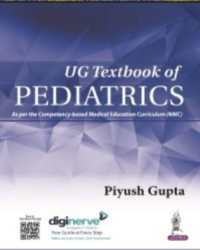基本説明
This stimulating new book, as the premier work introducing bilingual lexicography from a communicative perspective, is launched to represent original thinking and innovative theorization in the field of bilingual lexicography. Throughout the study, special focus is on English and Chinese bilingual lexicography.
Full Description
This stimulating new book, as the premier work introducing bilingual lexicography from a communicative perspective, is launched to represent original thinking and innovative theorization in the field of bilingual lexicography. It treats the bilingual dictionary as a system of intercultural communication and bilingual dictionary making as a dynamic process realized by sets of choices, characterizing the overall nature of the dictionary. It examines the dictionary and dictionary making by using a model of lexicography which stresses the three-way relationship of compiler, dictionary context and user and incorporates them into a unified coherent framework. Throughout the study, special focus is on English and Chinese bilingual lexicography. It will serve not only as a valuable guide to those interested in dictionary compilation and theoretical inquiries but also as a textbook for undergraduate and postgraduate courses in bilingual lexicography.
Contents
1. Acknowledgements; 2. Chapter 1. Towards a communicative model of lexicography; 3. 1.1 The nature of the dictionary; 4. 1.2 Lexicography; 5. 1.3 Bilingual lexicography; 6. Chapter 2. Bilingual lexicography: A comparative approach; 7. 2.1 Compiler aspect: Choices of perspectives and purposes; 8. 2.2 Dictionary context; 9. 2.3 User aspect: Language needs and reference skills; 10. Chapter 3. Modern linguistics and bilingual lexicography; 11. 3.1 Grammar and bilingual lexicography; 12. 3.2 Semantics and bilingual lexicography; 13. 3.3 Pragmatics and bilingual lexicography; 14. 3.4 Sociolinguistics and bilingual lexicography; 15. Chapter 4. Bilingual dictionaries: A communicative typology; 16. 4.1 Previous dictionary typologies: A general survey; 17. 4.2 A Communicative typology; 18. Chapter 5. Bilingual dictionaries: A structural description; 19. 5.1 Outside matter structure; 20. 5.2 Macrostructure; 21. 5.3 Microstructure; 22. 5.4 Bidirectionality and reversibility; 23. Chapter 6. Bilingual dictionaries: Fundamental principles; 24. 6.1 General principles; 25. 6.2 Bilingual principles; 26. Chapter 7. Bilingual dictionaries: Problems and reflections; 27. 7.1 Anisomorphism; 28. 7.2 Equivalence presentation; 29. 7.3 Meaning discrimination; 30. 7.4 Grammar; 31. 7.5 Collocation; 32. 7.6 Style and register; 33. 7.7 Exemplification; 34. 7.8 Illustration; 35. 7.9 Glossing; 36. 7.10 Etymology; 37. 7.11 Revision; 38. Chapter 8. Bilingual dictionaries: Ways of handling idioms; 39. 8.1 Idioms: Their features; 40. 8.2 Idioms: Their status; 41. 8.3 Idioms: Their location; 42. 8.4 Idioms: Their translation; 43. 8.5 Idioms: Their grammar and usage; 44. Chapter 9. Bilingual dictionaries: Recommendations and samples; 45. 9.1 Recommendation one: Lexicographic purposes and choices; 46. 9.2 Recommendation two: Active and passive dictionary designs; 47. 9.3 Recommendation three: Macrostrucutral organization; 48. 9.4 Recommendation four: Lexical classes discriminated; 49. 9.5 Recommendation five: Equivalence presentation; 50. 9.6 Recommendation six: Meaning discrimination; 51. 9.7 Recommendation seven: Grammatical description; 52. 9.8 Recommendation eight: Lexical combination; 53. 9.9 Recommendation nine: Labels and glosses; 54. 9.10 Recommendation ten: Exemplification; 55. 9.11 Recommendation eleven: Idiom treatment; 56. 9.12 Recommendation twelve: Word histories; 57. Bibliography; 58. List of major dictionaries cited; 59. Index








